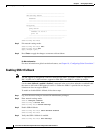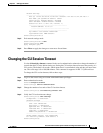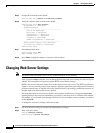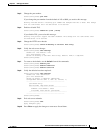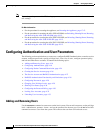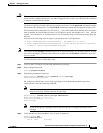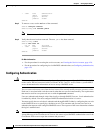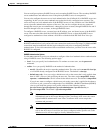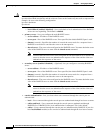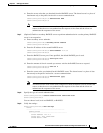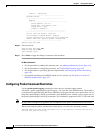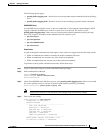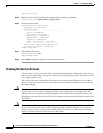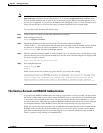
4-20
Cisco Intrusion Prevention System CLI Sensor Configuration Guide for IPS 7.1
OL-19892-01
Chapter 4 Setting Up the Sensor
Configuring Authentication and User Parameters
Caution Do not add multiple Cisco av-pairs with the same key. You should have only one instance of
ips-role=value. Make sure the key and the value are correct or the feature may not work as expected. For
example, do not use the following configuration:
ips-role= administer
ips-role=ad
–
local-fallback {enabled | disabled}—Lets you default to local authentication if the RADIUS
servers are not responding. The default is enabled.
• primary-server—Lets you configure the main RADIUS server:
–
server-address—IP address of the RADIUS server.
–
server-port—Port of the RADIUS server. If not specified, the default RADIUS port is used.
–
timeout (seconds)—Specifies the number of seconds the sensor waits for a response from a
RADIUS server before it considers the server to be unresponsive.
–
shared-secret—The secret value configured on the RADIUS server. You must obtain the secret
value of the RADIUS server to enter with the shared-secret command.
Note You must have the same secret value configured on both the RADIUS server and the IPS
sensor so that the server can authenticate the requests of the client and the client can
authenticate the responses of the server.
• secondary-server {enabled | disabled}— (Optional) Lets you configure a secondary RADIUS
server:
–
server-address—IP address of the RADIUS server.
–
server-port—Port of the RADIUS server. If not specified, the default RADIUS port is used.
–
timeout (seconds)—Specifies the number of seconds the sensor waits for a response from a
RADIUS server before it considers the server to be unresponsive.
–
shared-secret—The secret value configured on the RADIUS server. You must obtain the secret
value of the RADIUS server to enter with the shared-secret command.
Note You must have the same secret value configured on both the RADIUS server and the IPS
sensor so that the server can authenticate the requests of the client and the client can
authenticate the responses of the server.
• console-authentication—Lets you choose how users connected through the console port are
authenticated:
–
local—Users connected through the console port are authenticated through local user accounts.
–
radius-and-local—Users connected through the console port are authenticated through
RADIUS first. If RADIUS fails, local authentication is attempted. This is the default.
–
radius—Users connected through the console port are authenticated by RADIUS. If you also
have local-fallback enabled, users can also be authenticated through the local user accounts.



